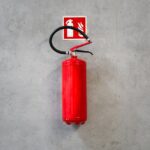An ADR driver is qualified to transport dangerous goods by road in compliance with the European Agreement concerning the International Carriage of Dangerous Goods by Road (ADR).
Why Is ADR Training Important?
ADR stands for “Accord Dangereux Routier,” which is French for “Road Dangerous Goods Agreement.” This certification is essential for ensuring that individuals who transport hazardous goods have completed the necessary training course to handle such materials safely. To hold an ADR license, drivers understand the risks involved with the carriage of dangerous goods by road and can take appropriate precautions to ensure safety.
As hazardous materials are classified due to the potential harm to both the environment and human health, to transport hazardous waste you must hold the ADR driving license.
When you hire a driver to remove hazardous waste, this license acts as security. For businesses to follow hazardous disposal guidelines, transportation must be completed by a carrier with ADR training. Your dangerous goods vehicle can then move freely across the UK and EU to its final destination.
What Is Classified As Dangerous Goods?
Dangerous goods are items or substances that pose risks to health, safety, property, or the environment during transportation.
These are broadly categorised into 9 classes, each with its own specific criteria and labelling requirements:
Explosives – This class includes substances that can explode, such as fireworks, ammunition, and dynamite.
Gases – These are substances that can be compressed, liquefied, or dissolved under pressure. This class includes flammable gases (like hydrogen and propane), non-flammable and non-toxic gases (like nitrogen and helium), and toxic gases (like chlorine and phosgene).
Flammable Liquids – These are liquids with a low flash point, meaning they can ignite easily at relatively low temperatures. Examples include gasoline, alcohol, and acetone.
Oxidising Substances and Organic Peroxides – These materials can cause or enhance the combustion of other materials due to their ability to release oxygen. Examples include hydrogen peroxide and potassium permanganate.
Toxic and Infectious Substances – This includes substances that pose risks to health if inhaled, swallowed, or come into contact with skin, as well as materials containing pathogens.
Radioactive Material – These are substances that emit ionising radiation, such as uranium and plutonium.
Corrosives – Materials that can cause severe damage to living tissue, other freight, or transport means by chemical action. Examples include sulfuric acid and hydrochloric acid.
Miscellaneous Dangerous Goods – These are substances that present dangers not covered by other classes, including environmentally hazardous substances, lithium batteries, and magnetised materials.
Each class has specific packaging, labelling, and handling requirements to ensure the safe transportation of these dangerous goods.
We Provide Professional Hazardous Waste Collections
Our licensed team of ADR drivers can collect and remove your hazardous waste safely. Your materials will then be transported to appropriate disposal and recycling facilities. This ensures the materials can be recycled where possible, or disposed of in the most environmentally friendly manner. Get in touch today to book a collection and ensure your business follows hazardous disposal guidelines.


